It is estimated that the mass of the dark companion at the center of mass should be around 50 years. However, this statement was met with doubt as the dark companion couldn’t be observed and its mass was expected to be quite large, similar to the mass of Sirius.
In the case of red giants with relatively small masses (approximately the mass of the Sun), the isothermal cores are primarily composed of helium. On the other hand, for more massive stars, the isothermal cores consist of carbon and heavier elements. Nevertheless, the density of such isothermal cores is incredibly high, resulting in the electrons within the nucleus being closely packed together. This fulfillment of the degeneracy conditions of the electron gas is indicated by the electron’s wavelength, λ = h / m v. Furthermore, calculations indicate that the density of isothermal nuclei corresponds to the density of white dwarfs, thus confirming that the nuclei of red giants are essentially white dwarfs.
In the image of NGC 6397 (Figure 5), both types of white dwarfs can be observed: helium white dwarfs, which form from less massive stars, and carbon white dwarfs, which are the result of the evolution of more massive stars.
Red giants undergo mass loss and shed their outer layers
Within the vast expanse of the cosmos, there exist celestial bodies that captivate the minds of scientists and enchant the imaginations of amateur stargazers. White dwarfs, these enigmatic stars of immense density, possess an incredible magnitude of energy and gravitational pull despite their relatively diminutive size. The study of these extraordinary cosmic entities unlocks a realm of perplexity, expanding our comprehension of the structure and evolution of the ever-expanding universe.

Nevertheless, white dwarf stars are not your ordinary celestial bodies. They are dense conglomerates of matter compressed to extreme boundaries, resulting in peculiar transformations. In this article, we will explore their internal structure, as well as unravel the multitude of enigmas they present to scientists.
This piece will uncover the significance of white dwarfs in the evolution of galaxies and their influence on the cosmic ecosystem. You will discover the gradual fading of these stars, leaving behind remnants in the form of planetary nebulae and other cosmic phenomena.
Introduction
White dwarfs are unique celestial bodies that possess a mass similar to that of the Sun (M⊙), but have a significantly smaller radius, approximately 100 times smaller compared to the Sun. The density of matter within white dwarfs varies from 108 to 109 kg/m3.
Within our Galaxy, it is estimated that there are approximately 10 billion white dwarfs, making up a small percentage of the total number of stars.
However, the current comprehensive catalog, which is based on the observations made by the GAIA space telescope, only includes a few hundred thousand of these objects. This is due to the fact that the majority of white dwarfs are located at great distances from us and have low levels of luminosity. Additionally, a significant number of them exist within double star systems.
Throughout the history of astronomy, there have been several significant findings that have contributed to the understanding and classification of white dwarfs. One such discovery occurred in 1785 when William Herschel included the star 40 Eridanus B in his collection of double stars, noting its relatively low brightness and high color temperature. This marked the first identification of a white dwarf. Later, in 1844, Friedrich Bessel conducted a study on Sirius and Procyon, suggesting that these stars had nearby companions.
In 1862, Alvin Graham Clark made a breakthrough by detecting a companion to Sirius, while in 1896, D. M. Scheberle confirmed the existence of a companion to Procyon, thus validating Bessel’s earlier predictions.
Nonetheless, a significant breakthrough occurred in the exploration of white dwarfs in 1915 when Walter Sidney Adams conducted spectrum measurements on Sirius B. These measurements demonstrated that the temperature of Sirius B was equivalent to, if not higher than, that of Sirius A, despite its notably lower luminosity. This finding suggested the presence of a white dwarf with a remarkably small radius and high density.
As technology advanced and modern observational instruments emerged, the discovery of additional white dwarfs became possible. Adriaan van Maanen, for instance, identified the van Maanen star in the Pisces constellation in 1917.


In 1922, Willem Jakob Leiten coined the phrase “white dwarfs” to describe stars of this type. Since then, ongoing investigations into white dwarfs have unveiled fresh insights into their characteristics and significance in the field of cosmic astronomy.
Origins
The origin of white dwarfs is connected to the development of ordinary low- and intermediate-mass stars. This process initiates once the star depletes its nuclear fuel necessary to sustain nuclear reactions at its core.
During this phase, the star transforms into a red giant. The outer layers of the star start to expand, causing it to significantly increase in size. Simultaneously, the inner layers of the star begin to contract due to the force of gravity. The red giant emits a tremendous amount of energy, causing its outer layers to gradually separate and disperse into outer space. The remaining portion of the star, which consists of a dense and compact core, undergoes a transformation into a white dwarf.
White dwarfs do not undergo nuclear reactions or generate heat and light. They gradually cool down as their temperature decreases. This is due to the fact that white dwarfs release their internal thermal energy by emitting it into the surrounding space. White dwarfs cool at a slow rate, primarily because of their compact size and high density.
The cooling period of a white dwarf is determined by its mass. Smaller white dwarfs cool more quickly, whereas larger white dwarfs can retain a high temperature and remain luminous for an extended duration. Eventually, a white dwarf may progress to its final evolutionary stage and transform into a brown dwarf or a black dwarf.
Structure
The arrangement of a white dwarf is determined by the interplay of two primary forces: gravitational compression and pressure from the electron gas. The central core of a white dwarf is predominantly composed of carbon and oxygen, with traces of other elements like neon and magnesium.
An electron plasma, formed by highly energetic electrons, fills the region between the core and the outer layers of the white dwarf. These electrons experience degeneracy, meaning that they exist in a quantum mechanical state with elevated energies. The degenerate electron pressure becomes a significant counteractive force to the gravitational compression of the white dwarf’s core.
Categories of white dwarfs
White dwarfs can be categorized into two primary groups based on their spectral characteristics: hydrogen white dwarfs (DA) and helium white dwarfs (DB).
| Hydrogen white dwarfs (DA) | White dwarfs that do not exhibit helium spectral lines | These white dwarfs represent the majority, accounting for up to 80% of the total population. Their spectra lack any indication of helium spectral lines. |
| Helium white dwarfs (DB) | White dwarfs that lack hydrogen spectral lines | This category of white dwarfs is relatively uncommon. The spectra of these stars do not contain any hydrogen spectral lines. |
Characteristics of white dwarfs
White dwarfs possess distinct physical and chemical attributes as they reach the final stage in the life cycle of regular stars.
Chemical makeup
The chemical composition of a white dwarf is influenced by the mass of the original star and the point at which nuclear reactions in its core are depleted. Consequently, white dwarfs can exhibit varying chemical compositions.
If the original star had a small mass, ranging from 0.08 to 0.5 times that of the Sun, it will transform into a helium white dwarf after the depletion of hydrogen. In these stars, helium becomes the principal component. The mass of helium white dwarfs typically does not exceed 0.5 times that of the Sun.
If the initial star had a mass ranging from 8 to 12 solar masses, it has the ability to progress in its evolution even after the burning of helium and experience a phase of carbon burning. As a result of this evolution, a white dwarf is formed with a rich composition of oxygen, neon, and magnesium. The mass of such white dwarfs can approach the Chandrasekhar limit, which is approximately 1.4 solar masses.
Hence, the chemical makeup of a white dwarf is determined by the mass of the original star and the point at which thermonuclear reactions in its core concluded.
The Limit of Chandrasekar
The limit of Chandrasekar is the maximum amount of mass that a white dwarf can possess without collapsing under its own gravitational force. This boundary is determined by the Pauli exclusion principle, also recognized as the Pauli prohibition principle, which characterizes the actions of fermions (particles with a spin of half an integer, such as electrons) and prohibits two fermions from occupying the same quantum state.
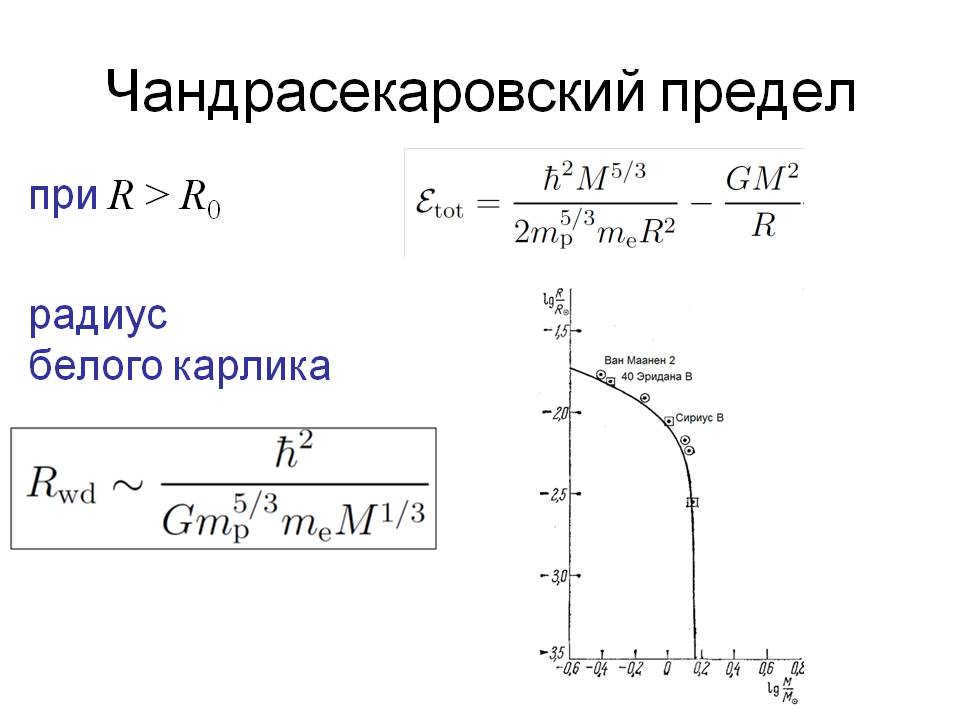

When it comes to white dwarfs, their ability to resist compression and collapse is mainly due to the gravitational forces and the pressure exerted by the electron gas inside. If a white dwarf surpasses the Chandrasekar limit, its mass becomes so immense that the pressure from the electron gas can no longer maintain equilibrium with the gravitational forces. As a result, instability sets in and collapse occurs.
The Chandrasekar limit is influenced by physical factors such as the composition and temperature of the white dwarf. It is approximately 1.4 times the mass of the Sun, meaning that a white dwarf with a mass exceeding this limit cannot remain stable and will inevitably collapse.
Rupture
In the event that a white dwarf surpasses the Chandrasekar threshold, it may undergo a rupture, causing it to become unstable and contract due to the gravitational forces acting upon it. The outcome of this event can vary depending on the specific conditions and characteristics of the white dwarf.
An alternative scenario for the rupture of a white dwarf involves a thermonuclear detonation commonly referred to as a Supernova. When the Chandrasekar limit is surpassed in this situation, a nuclear reaction ensues, resulting in the fusion of carbon and oxygen, triggering a colossal explosion and the release of immense amounts of energy.
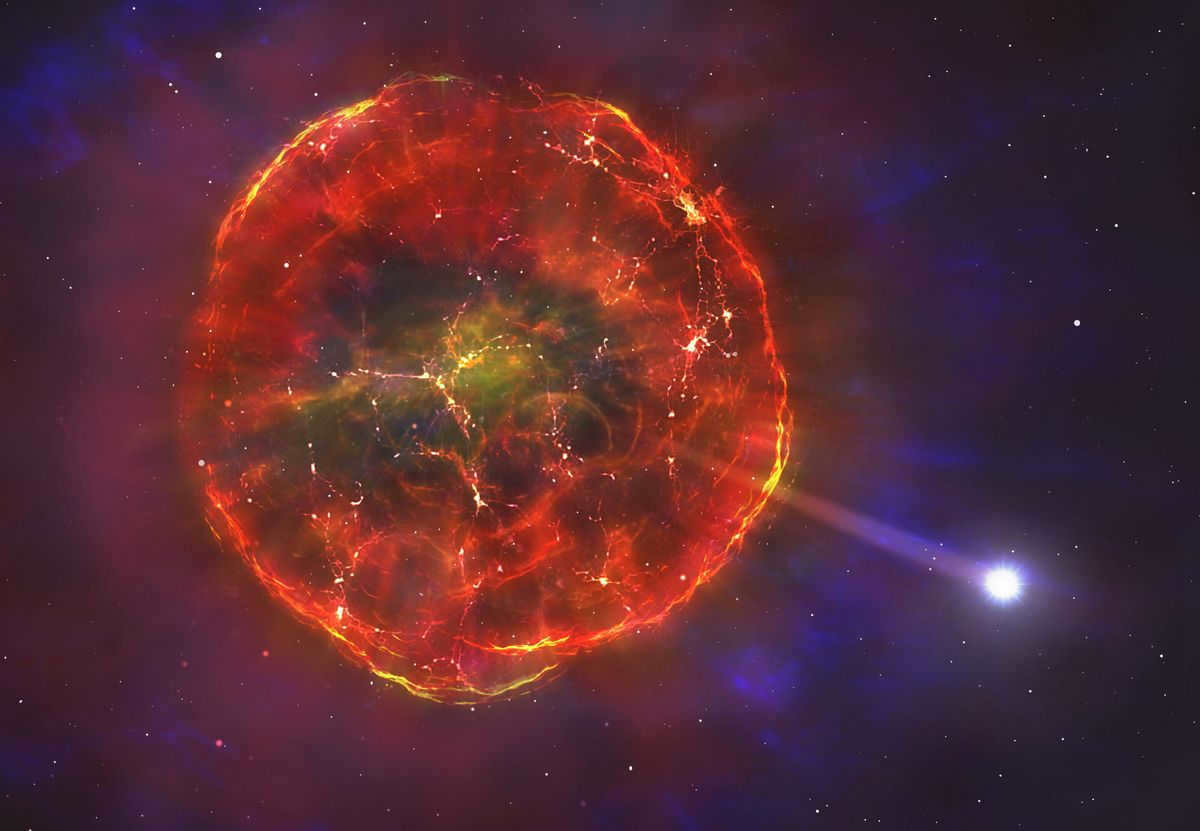
When a white dwarf collapses, it has the potential to create a neutron star or black hole, particularly if it is part of a binary system with another celestial body, such as a neutron star or black hole. The combination and fusion of these objects can result in the release of energy and the emergence of different astronomical occurrences.
White dwarfs possess a notable attribute of having a remarkably high surface temperature. This temperature is a consequence of the intricate processes occurring within their core and residual layers.
Typically, the surface temperature of white dwarfs reaches several thousand degrees Kelvin. The exact temperature is contingent upon various factors such as the mass of the original star, the phase of evolution it underwent, and other relevant considerations. White dwarfs formed from more massive progenitors generally exhibit higher temperatures in comparison to those formed from less massive progenitors.
The temperature of a white dwarf holds sway over its luminosity and spectral characteristics. By virtue of their elevated temperature, white dwarfs radiate intense electromagnetic waves, primarily falling within the ultraviolet and visible segments of the spectrum. As a rule, their spectra display a distinct radiative element.
Characteristics of spectra
White dwarf spectra exhibit several distinct differences compared to those of main-sequence stars and giants. One notable characteristic is the presence of a few highly blurred absorption lines. In certain white dwarfs, specifically those classified as spectral class DC, the number of observable absorption lines is almost negligible.
The scarcity of absorption lines in the spectra of this particular class can be attributed to the intense blurring of the lines: only the strongest absorption lines maintain enough depth to be discernible, while the fainter lines, due to their shallow depths, essentially blend with the continuous spectrum.
Accretion
Accretion is the process of gradual growth or accumulation. It occurs when matter, such as dust and gas, accumulates and clumps together to form larger objects, such as planets, stars, or galaxies. This phenomenon is crucial in the formation and evolution of celestial bodies.
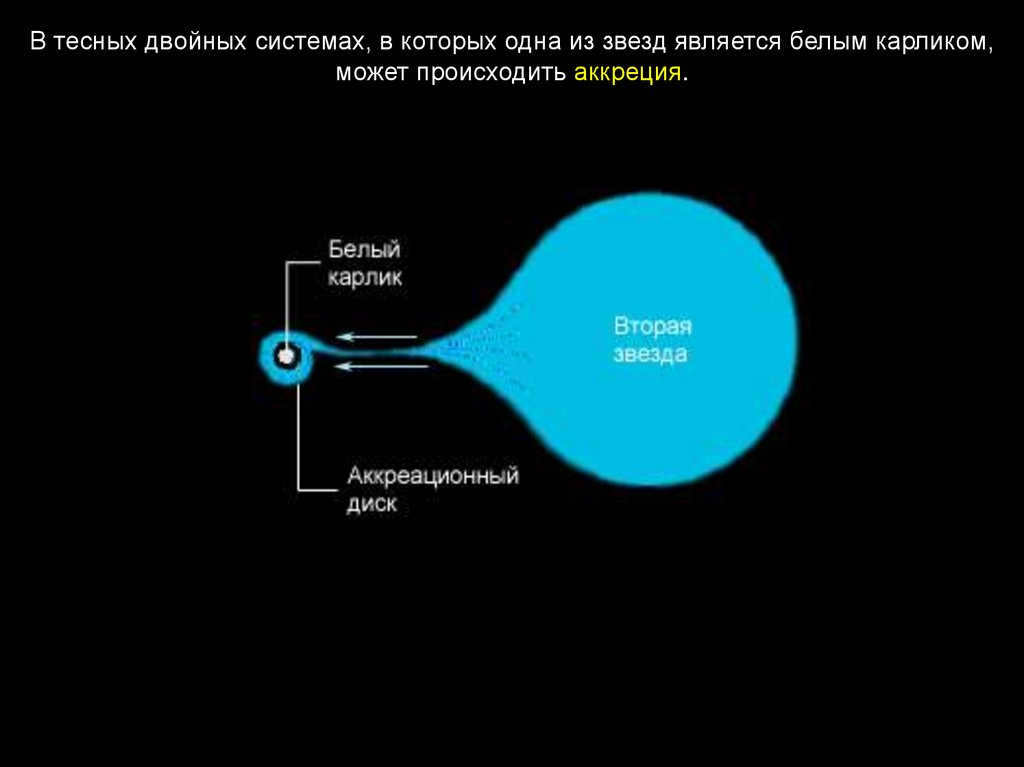
If there is a white dwarf in a close binary system with another star, their gravitational interaction can cause the transfer of matter from the companion’s surface to the surface of the white dwarf. This process results in the active accumulation of matter and a significant increase in the white dwarf’s mass.
Accretion can also take place when there is an accretion disk surrounding the white dwarf. This disk is a region where gas and dust gather and then fall onto the surface of the white dwarf. Such a disk can form in systems that have planetary nebulae or when the white dwarf interacts with the interstellar medium. This process can cause changes in the physical properties and evolution of the white dwarf.
Here are a few intriguing pieces of information about white dwarfs:
- GRW +70 8247 is the lightest white dwarf and can be found in the Dragon constellation, approximately 43 light-years away from Earth. To observe it, one needs a powerful telescope as its stellar magnitude is around 13.
- The closest white dwarf to our Sun is van Maanen’s star, situated in the heart of the Pisces constellation, just 14.4 light-years away. Nonetheless, its faintness renders it invisible to the naked eye.
- Sirius B is perhaps the most renowned white dwarf. It acts as a companion to the well-known star Sirius and resides around 8.5 light-years distant from us.
- The largest known white dwarf is located within the planetary nebula M27, also known as the Dumbbell Nebula. This celestial object can be found in the Foxy constellation, approximately 1360 light-years away from our planet. Notably, its size surpasses that of any other documented white dwarf.
White dwarf stars have the ability to emit X-rays. X-rays are produced when matter accumulates on the surface of these stars and undergoes nuclear reactions.
Summary
Studying white dwarfs contributes to our understanding of the physical processes within stars, the evolution of stellar systems, and the structure of the universe. It plays a crucial role in comprehending star formation, the life cycle of stars, and the evolution of galaxies. Advancements in technology and observational tools enable us to delve deeper into the study of these celestial objects, broadening our understanding of their various characteristics, chemical composition, structure, and physical phenomena.
As we gaze upon the nocturnal expanse, it appears to us that each and every star is indistinguishable. The human eye struggles to discern the visible array of light radiating from remote celestial entities. A star that remains perceptible may have already ceased to exist, leaving behind only its luminous remnants. Every star experiences a unique existence. Some emit a steady, white radiance, while others pulsate like vibrant neon bulbs. There are also those that shine faintly, mere specks of light that are barely perceptible in the vastness of the sky.

Every star goes through a specific phase of its life cycle and eventually transforms into a different type of celestial object. Instead of being a bright and dazzling point in the night sky, it becomes a white dwarf, an aging star. This stage of evolution is common among most regular stars. Even our Sun cannot evade a similar destiny.
It was only in the 20th century that scientists came to realize that a white dwarf is the remnants of a regular star in space. The study of stars from the perspective of thermonuclear physics has provided insight into the processes that occur within these celestial bodies. Stars, which are formed through the interaction of gravitational forces, act as immense thermonuclear reactors where continuous chain reactions of hydrogen and helium nucleus fission take place. In such intricate systems, the evolution rate of the components is not consistent. Vast reserves of hydrogen ensure the star’s longevity for billions of years. Thermonuclear hydrogen reactions facilitate the creation of helium and carbon. Subsequent to thermonuclear fusion, the laws of thermodynamics come into effect.
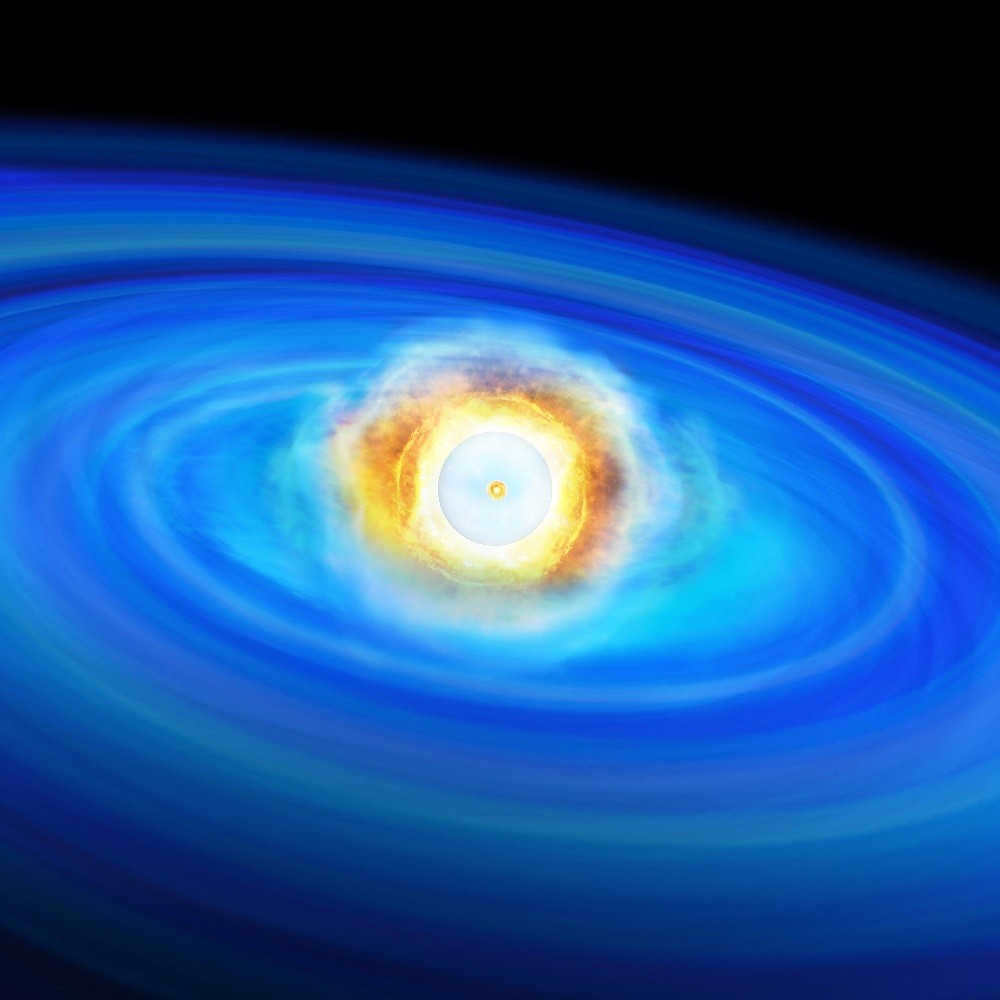
Once a star has depleted all of its hydrogen, its core begins to contract due to gravitational forces and immense internal pressure. Shedding most of its outer layers, the celestial body reaches the threshold of its mass limit, at which point it can exist as a white dwarf, devoid of energy sources, yet still emitting heat through inertia. Essentially, white dwarfs are remnants of red giants and supergiants that have shed their outer shells.

Thermonuclear fusion depletes the star, leading to the depletion of hydrogen and the evolution of the more massive component, helium. This evolution results in the formation of red giants in place of normal stars, causing them to leave the main sequence. As a result, the celestial luminary undergoes a gradual transformation as it embarks on its slow and inevitable journey towards old age and eventual oblivion. The process happens at a very slow pace. A white dwarf is a celestial luminary that undergoes the inevitable process of extinction outside the main sequence. The core of the aging star shrinks due to helium fusion reaction, eventually causing the luminary to lose its outer shell.
The progression of white dwarfs
After exiting the main sequence, stars undergo a process of termination. Gravitational forces cause the heated gas of red giants and supergiants to disperse throughout the cosmos, creating a youthful planetary nebula. Over hundreds of thousands of years, the nebula dissipates, leaving behind a degenerate core of a white-colored red giant. The temperatures of such an entity are significantly high, ranging from 90000 K, as estimated from the absorption line of the spectrum, to 130000 K when estimated using the X-ray spectrum. However, due to its small size, the cooling process of this celestial luminary is exceedingly gradual.
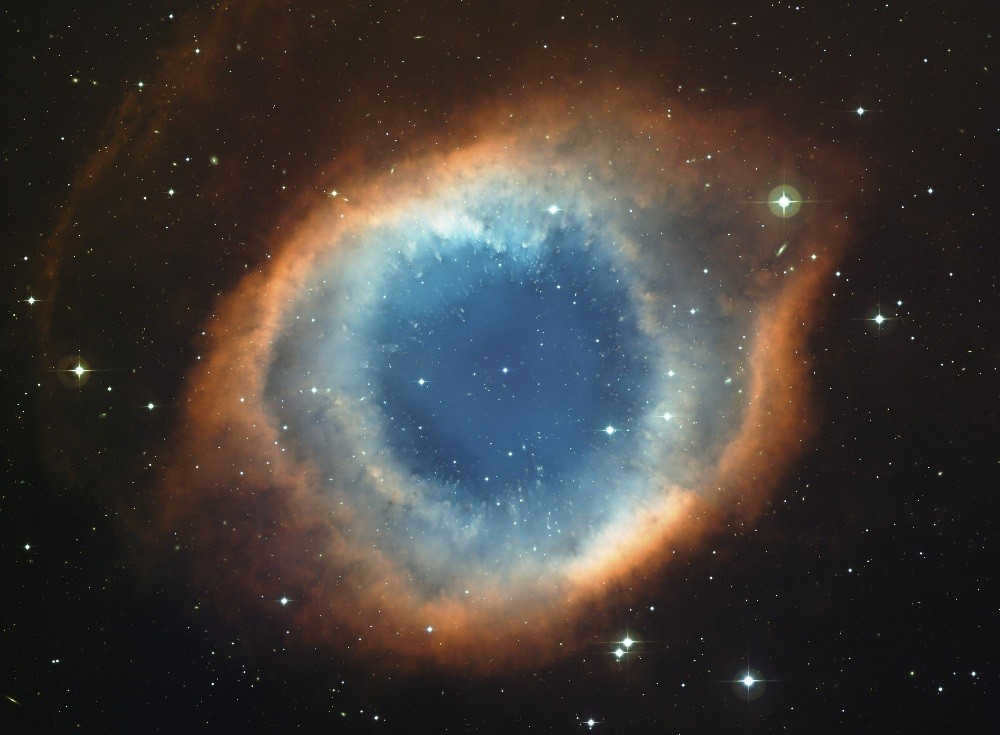
The image of the starlit sky that we observe is billions of years old, dating back to tens or even hundreds of billions of years. While we perceive white dwarfs, there might already be another celestial entity occupying that space. These stars have transitioned into the category of black dwarfs, marking the final stage of their evolution. In reality, what remains in place of the star is a dense mass of matter with a temperature equivalent to that of the surrounding environment. The most distinctive characteristic of this object is its complete absence of visible light. Due to its weak luminosity, detecting such a star using a typical optical telescope is rather challenging. However, the primary indicator for identifying white dwarfs lies in the presence of intense ultraviolet radiation and X-rays.
All existing white dwarfs are categorized into two groups based on their spectrum:
- Hydrogen objects, classified as spectral class DA, have no helium lines in their spectrum;
- Helium dwarfs, classified as spectral class DB. The prominent lines in their spectrum are helium.
Hydrogen-type white dwarfs constitute the majority, comprising up to 80% of all presently known objects of this kind. The remaining 20% consist of helium dwarfs.
The stage of evolution that leads to the formation of a white dwarf is the final phase for stars that are not massive, including our Sun. During this stage, the star possesses the following characteristics. Despite its small and compact size, the mass of the stellar matter in a white dwarf is precisely balanced for its survival. In other words, white dwarfs, which have a radius 100 times smaller than that of the Sun, can have a mass equivalent to or even greater than our star.
This implies that the density of a white dwarf is millions of times higher than that of regular stars in the main sequence. For instance, the density of our star is 1.41 g/cm³, whereas the density of white dwarfs can reach enormous values of 105-110 g/cm3.
As these objects lack their own energy sources, they slowly lose heat and consequently have a low temperature. The temperature on the surface of white dwarfs is measured to be within the range of 5000-50000 degrees Kelvin. The temperature of a star decreases as it ages.
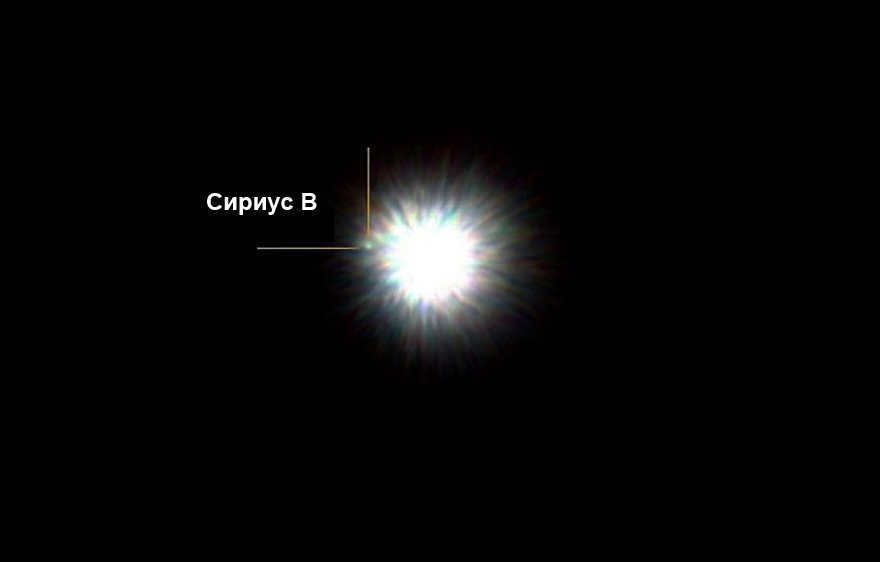
For instance, the companion star to Sirius A, which is the brightest star in the sky, is Sirius B, a white dwarf star. It has a surface temperature of just 2100 Kelvin degrees. However, its interior is much hotter, reaching almost 10000°K. Astronomers first discovered Sirius B, making it the first white dwarf star to be identified. The subsequent white dwarf stars that were discovered also had the same white color, which led to the classification of these stars as white dwarfs.
White dwarfs are not the most prevalent objects in the Universe, as they are out of the main sequence in terms of prevalence. In our galaxy, they make up only 3-10% of celestial luminaries. The estimate of this part of the stellar population in our galaxy is uncertain due to the weak emission in the visible polar region. In simpler terms, the light from white dwarfs is not strong enough to penetrate the large clusters of cosmic gas that form the arms of our galaxy.
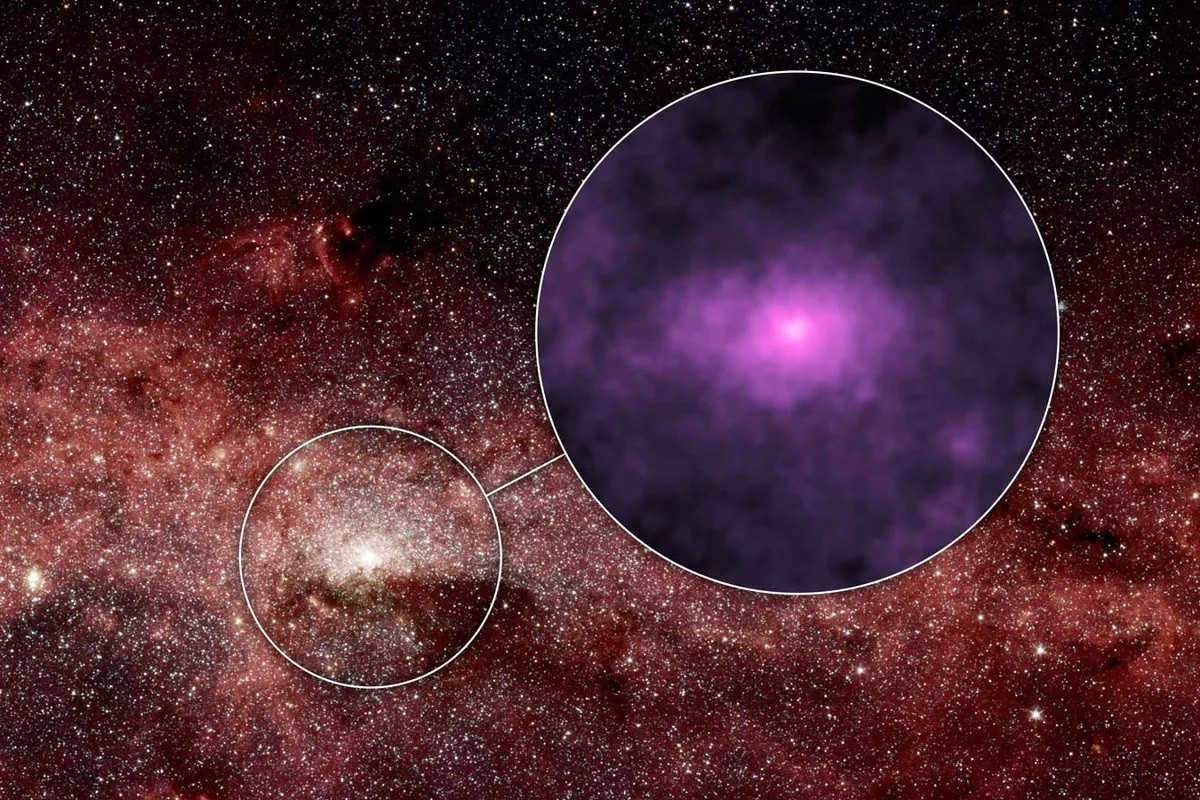
The scientific perspective on the history of white dwarfs
Following this, a new source of thermonuclear energy known as the triple helium reaction, or triple alpha process, is emerging within celestial objects as the main sources of thermonuclear energy that have depleted, resulting in helium burnout. These hypotheses were fully substantiated once the behavior of stars could be observed in the infrared. The light spectrum of a typical star varies significantly from what is observed in red giants and white dwarfs. For degenerate nuclei within such stars, there exists an upper limit on mass, otherwise the celestial body becomes physically unstable and could potentially collapse.
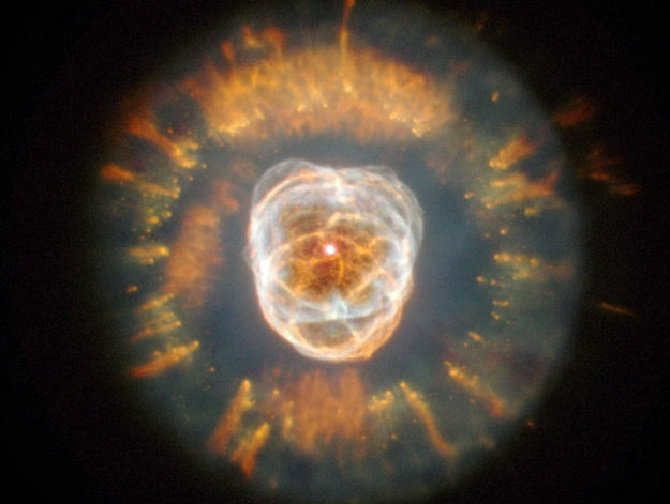
Through a comprehensive examination of white dwarfs utilizing radio telescopes and X-ray optics, it has emerged that these stellar entities are far more complex and intriguing than they may initially appear. Given the absence of thermonuclear reactions within these stars, one cannot help but wonder – from where does the immense pressure arise that skillfully counteracts the gravitational and internal gravitational forces.
Physicists studying quantum mechanics have developed a model of a white dwarf, which is formed when gravitational forces compress stellar matter to the point where electron shells are destroyed and electrons begin to move chaotically between different states. In the absence of electrons, atomic nuclei form a strong and stable bond, creating a system. The large number of electrons in stellar matter leads to the formation of numerous states, resulting in the conservation of electron velocity. This high velocity of elementary particles generates significant internal pressure in the form of electron degenerate gas, allowing the white dwarf to resist the pull of gravity.
When were white dwarfs first recognized?
Although the discovery of the first white dwarf by astrophysicists is credited to Sirius B, there are proponents of the theory that the scientific community had previous knowledge of stellar objects of this classification. As early as 1785, astronomer Herschel included a triple star system in the Eridanus constellation in his star catalog, distinguishing each star individually. It wasn’t until 125 years later that astronomers noticed the abnormally low luminosity of 40 Eridanus B, along with its high color temperature, leading to the classification of such objects as a distinct class.
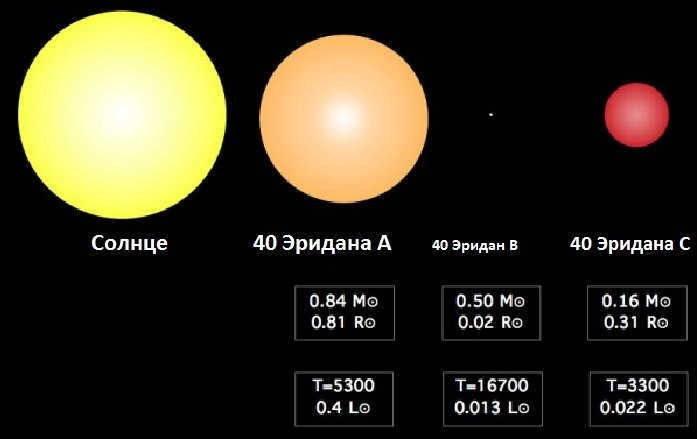
The celestial body exhibited a subtle radiance equivalent to a stellar magnitude of +9.52m. The white dwarf possessed a mass that was half that of the sun and boasted a diameter smaller than that of the Earth. These characteristics contradicted the prevailing theory regarding the internal composition of stars, which stipulated that luminosity, radius, and surface temperature were the primary parameters for classifying stars. The dwarf’s diminutive diameter and relatively low luminosity failed to align with the expected high color temperature, thereby giving rise to numerous inquiries.
The circumstances surrounding another white dwarf, known as Sirus B, are quite remarkable. As a companion to the Sirius system’s brightest star, this white dwarf possesses a small size coupled with an immense density of stellar matter, measuring at a staggering 106 g/cm3. To put this into perspective, if the matter of this celestial luminary were condensed into a matchbox-sized volume, it would weigh over a million tons on Earth. Additionally, the temperature of this dwarf is a remarkable 2.5 times hotter than the main star of the Sirius system.
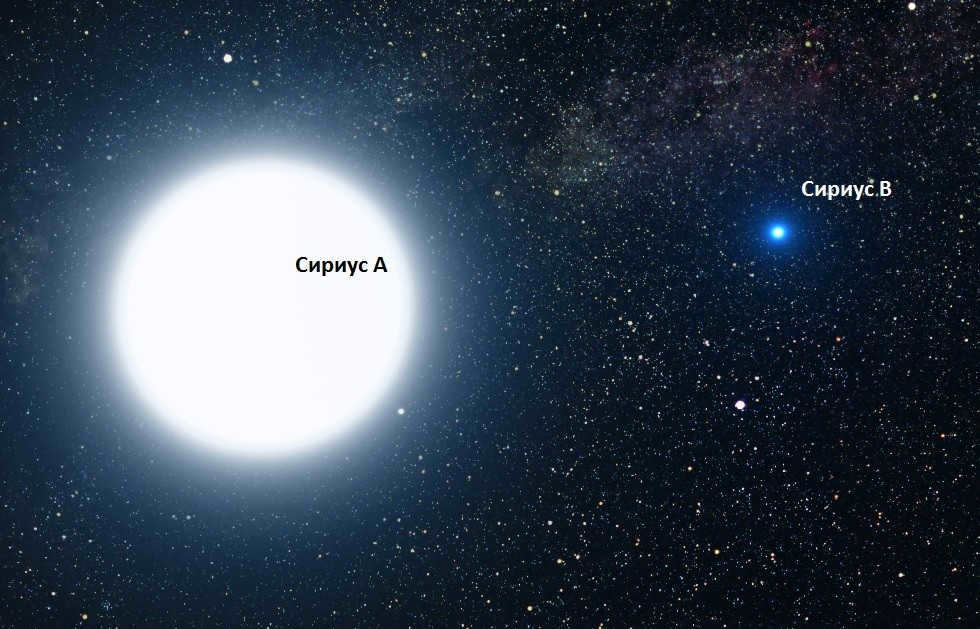
New scientific discoveries
The study of celestial bodies provides a unique opportunity to explore the structure and evolution of stars. While the birth of stars can be explained by universal physical laws, their evolution involves different processes. Many of these processes can be explained by quantum mechanics, which is the study of elementary particles.
Among all celestial objects, white dwarfs are particularly mysterious:
- Furthermore, in the absence of nuclear fusion reactions, white dwarfs maintain their status as hot celestial objects;
- Moreover, these stars possess a high color temperature and exhibit low luminosity.
Scientists from various disciplines, including astrophysicists, physicists, and nuclear scientists, are still seeking answers to these and numerous other questions. These answers will enable us to predict the future of our own native star. The Sun is destined to become a white dwarf, but it remains uncertain whether humans will have the ability to observe the Sun in this new form.
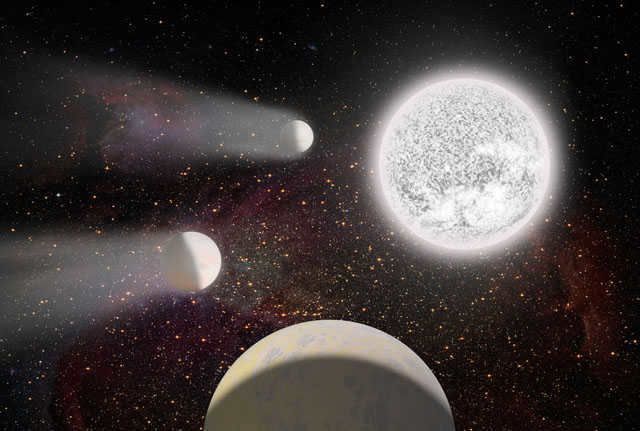
Astronomers from the Harvard-Smithsonian Astrophysical Center in Cambridge, England, have made a groundbreaking discovery – a star known as WD 1145+017, which has been nicknamed the “death star” due to its ability to destroy planets. This celestial object, located in the Virgo constellation, is currently in the process of obliterating an exoplanet that is similar in size to the dwarf planet Ceres.
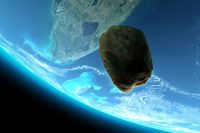
“This is a phenomenon that has never been witnessed by humanity before. We are witnessing the destruction of a star’s own planetary system. We now have undeniable evidence that white dwarfs*** do periodically annihilate planets,” stated astronomer Andrew Vanderburgh, who was involved in the study of the demise of the star.
Is the “death star” recently discovered capable of annihilating Earth?
No, WD 1145+017, the celestial object in question, does not pose any danger to our beloved planet.
Do any death stars exist that can obliterate Earth?
Absolutely, there are such stars. The Sun, for instance, has the potential to annihilate Earth, but only after it exhausts its nuclear fuel and transforms into a white dwarf. However, even before this catastrophic event occurs, life on Earth would have ceased to exist due to the star’s gradual depletion of its outer layers. This cosmic phenomenon is projected to transpire within the next 5-7 billion years.
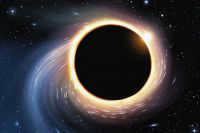
What causes the destruction of planets by white dwarfs?
Planets are destroyed when they come under the strong gravitational pull of a white dwarf, causing them to be torn apart.
This occurs because as stars fade, they deplete their hydrogen reserves and gradually shed their outer layers, forming a planetary nebula. In the center of this nebula, only a dense core remains – a white dwarf with a radius one hundredth the size of the original star, but with a similar mass. The high density of matter in white dwarfs creates a powerful gravitational force. Any planets that come close to a white dwarf are ultimately destroyed by the tremendously increased gravity.
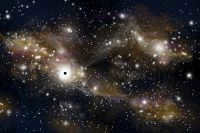


![<\displaystyle
ho \sim 10^<5></p>[ZEBR_TAG_/p></p><p><p> -10^>” width=”” height=””></p><p>This equation of state leads to an interesting situation. The average density of a white dwarf</p><p>where M is the mass and R is the radius of the white dwarf.</p><p>and a pressure force that counteracts gravity, equal to the pressure difference across the depth:</p><p>Gravitational forces that counteract pressure:</p><p>That is, while the pressure drop and gravitational forces are influenced by the radius in the same way, their dependence on mass is different, with ∼ M 4 / 3 > and ∼ M 2 > respectively. This relationship between the dependences leads to the existence of a specific mass value at which they balance each other out. Furthermore, due to the stronger dependence of gravitational forces on mass compared to the pressure drop, <i>the radius of a white dwarf decreases as its mass increases</i> (refer to Figure 8). Another consequence is that if the mass exceeds a certain threshold, the star will undergo collapse.</p><p>Therefore, there exists a maximum mass threshold (known as the Chandrasekar limit) for white dwarfs. It is intriguing to note that there also exists a corresponding minimum threshold for observed white dwarfs. This is due to the fact that the rate of stellar evolution is directly proportional to the mass of the star. As a result, the only low-mass white dwarfs we are able to observe are the remnants of stars that had sufficient time to evolve from the initial stages of star formation in the Universe up until the present day.</p><h3>Spectra of White Dwarfs</h3><p>The spectral characteristics of white dwarfs differ significantly from those of main-sequence stars and giants. One distinct feature is the presence of a limited number of absorption lines that are heavily broadened. In some cases, white dwarfs of the spectral class DC may not exhibit any noticeable absorption lines at all. The scarcity of absorption lines in the spectra of these stars can be attributed to the intense broadening effect. Only the strongest absorption lines, which are broadened to a significant extent, retain enough depth to be visible, while the weaker lines, due to their limited depth, essentially merge with the continuous spectrum.</p><h2>Astronomical phenomena involving white dwarfs [ ]</h2><h3>X-ray emission from white dwarfs [ ]</h3><p>The surface temperature of young white dwarfs, which are the remnants of stars after they shed their outer envelopes, starts off very high, exceeding 2-10 5 K. However, it quickly decreases due to the cooling effect of neutrinos and radiation from the surface. These newly formed white dwarfs can be observed emitting X-rays, such as in the case of the white dwarf HZ 43, which was observed by the ROSAT satellite.</p><p>The surface temperature of the hottest white dwarfs is around 7-10 4 K, while the coolest ones have a temperature of approximately 5-10³ K.</p><p>The distinctive feature of white dwarfs’ X-ray radiation is that the photosphere serves as their primary source, setting them apart from “regular” stars. In the latter, the X-ray luminosity of white dwarfs is derived from the reserve of ion heat energy in their interiors, making their luminosity age-dependent. The quantitative theory of white dwarfs’ cooling was formulated in the late 1940s. White dwarfs in binary systems experience accretion [ ].</p><ol><li>↑<i>Two Faint Stars with Large Proper Motion = Two Faint Stars with Large Proper Motion.</i> <i>Publications of the Astronomical Society of the Pacific.</i>. – December, 1917. – Vol. 29. – No. 172. – pp. 258-259.</li><li>Deborah Jean Warner. <i>Alvan Clark and Sons: Artists in Optics</i> Smithsonian Press, 1968</li><li>Shklovsky, I. S. On the nature of planetary nebulae and their nuclei // Astronomical Journal. – Vol. 33, No. 3, 1956. – pp. 315-329.</li><li>Я. B. Zeldovich, S. И. Blinnikov, N. I. Shakura. <i>Physical bases of the structure and evolution of stars</i>, М., 1981</li><li>Shklovsky I. S. <i>Stars: their birth, life and death.</i>M.: Nauka, 1984</li><li>Kippenhahn R. <i>100 Billion Suns. Birth, life and death of stars</i>M.: Mir, 1990</li><li><i>Physics of Space. Small Encyclopedia</i>, M.: Soviet Encyclopedia, 1986.</li></ol><h2>Also check out [ ]</h2><p><img decoding=](/wp-content/uploads/images/kakie-zvezdy-otnosjatsja-k-belym-karlikam_2.svg)



